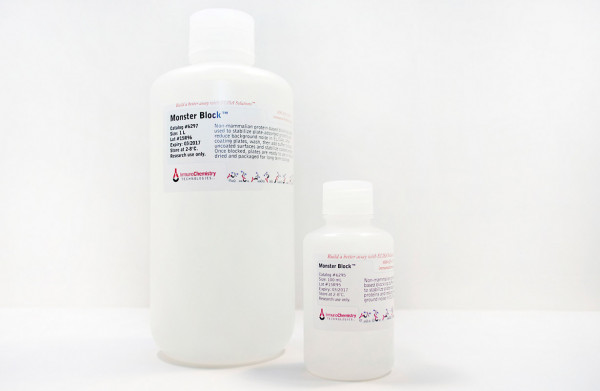If you’re a lab professional, you understand the challenge. It’s hard to know which ELISA blocker to choose, given the growing number of commercially available ELISA blockers, as well as the variability in efficiency and performance across the marketplace. Choosing the right one often comes down to fully understanding the factors that determine ELISA plate blocking – especially the stabilizing processes involved.
Blockers and Stabilizers: How They Work
The sample-interactive surfaces of most immunoassay tests are treated with a blocking agent. It has a short-term objective of covering the areas of the surface unoccupied by antibody or antigen structures. This also prevents assay reactants from taking up those vacant areas. Additionally, the blocking agent stabilizes the sticky constant region of antibodies. This occurs without interfering with its antigen binding sites. Should the assay require dry-state long term sample storage, use of an ELISA blocker is essential.
There’s No “One Size Fits All” Solution
Your choice of a blocker/stabilizer depends on the antibody/antigen result required. Here are four scenarios and the recommended blocker/stabilizer choice.
- Monitoring serological levels of an inflammation associated cytokine: We recommend ICT's General Block Buffer (BB1) for initial antibody-sandwich ELISA development scenarios such as this. Alternatively, use their SynBlock Blocker (BB3) if you need a protein-free option.
- Reducing elevated non-specific background signals: We recommend SynBlock Blocker (BB3) because this formulation does not contain animal protein-based blocking additives. SynBlock Blocker (BB3) has been shown to reduce background signal problems in the assay.
- Using joint tissue samples to develop an antigen-down ELISA to monitor serological levels: We recommend Neptune Block Buffer (BB2), which contains a heterogeneous mixture of non-mammalian proteins. Neptune Block Buffer (BB2) has been proven to minimize non-specific binding interactions.
- Developing an antibody-sandwich ELISA to enhance the assay sensitivity using an avidin-HRP plus biotin signal amplification protocol: We recommend Neptune Block Buffer (BB2). It can help to reduce (but not eliminate) the non-specific binding that can occur with IgG molecules becoming sticky because of biotin.
Successful enzyme immunoassay (EIA) or ELISA format development processes demand the appropriate blocking of antigen or antibody plates. It starts with selecting the most effective and efficient solution.
ImmunoChemistry Technologies currently offers a variety of blocking buffers, including an optimization pack that features five 100 mL bottles of our different Blocking Buffer formulations (General Block, Neptune Block, SynBlock, Alternative Block, and Monster Block) for an economical approach to screening for the best blocking buffer for an ELISA.















